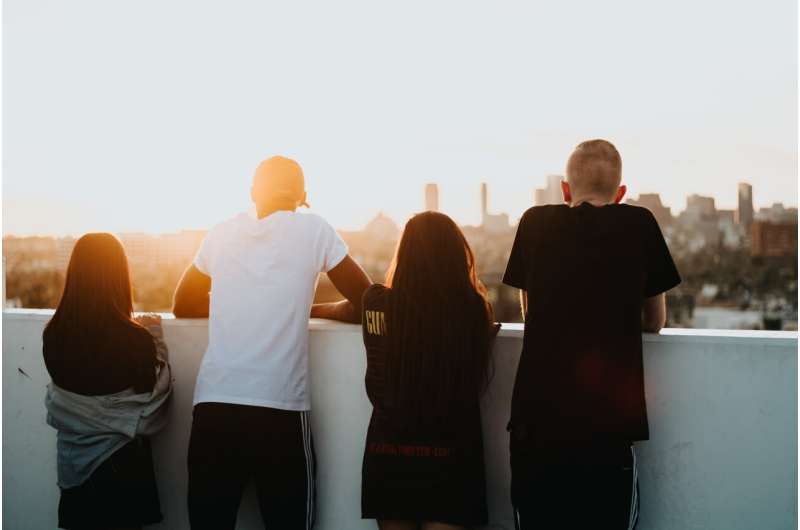Australia's new consent campaign gets a lot right: But consent education won't be enough to stop sexual violence

The Australian government has recently launched , a focused on supporting sexual consent communication between adults and young people.
Advertisements will run on television, in cinemas, online and on social media, encouraging adults to check their understanding of consent. Videos pose questions such as "how do I bring up consent?", "do I have to ask every time?" and "what if we've been drinking?", before finally asking "if we don't know the answers, how will our kids?".
The campaign website provides designed to equip adults to have conversations with each other, and with young people.
While this campaign has a lot of positives, consent education won't be enough to stop sexual violence on its own.
What motivated this campaign?
In launching this campaign, showing one in five women and one in 16 men have experienced sexual violence . One in two women and one in four men have experienced sexual harassment .
These statistics don't account for the experiences of trans and gender diverse people. In , a survey on the health and well-being of queer people in Australia, 64% of non-binary people, 55% of trans men and 42% of trans women had experienced sexual assault.
A lack of understanding of sexual consent is considered a major reason why sexual violence occurs. One noted almost half of people living in Australia who were surveyed were confused about what consent actually means for sex and intimacy.
In , more than one in four young people in Australia agreed that "when a man is very sexually aroused, he may not realize that the woman doesn't want to have sex."
What the campaign does well
The campaign is a welcome update to the infamous in 2021, which formed part of the campaign. This video was heavily criticized for its confusing messages and trivializing of consent.
Conversely, Consent Can't Wait takes a simple, direct and carefully worded approach that's not only directed at young people, but at adults as well.
This is perhaps what makes the campaign unique. Most consent campaigns have largely focused on supporting young people, but can forget that sexual violence occurs in all age groups, and that adults play an important role in shaping young peoples' understandings and attitudes towards consent.
Adults are often asked to lead conversations around consent with young people. However, they may not have a good understanding of the issue. Many adults today in their 30s and older are unlikely to have had a comprehensive sex education that included conversations about consent during their formative years. Being an adult who has sex does not automatically equate to a good understanding of consent.
The campaign includes on how adults should talk to each other and how they should talk to young people about consent. It includes interactive activities that unpack common questions ("what is sexual consent?") and bust such as "you only need to check for consent the first time."
There's also a "" that includes flyers for spreading awareness, and a resource hub with links to sexual health and sexual violence services. Guides are translated into more than 15 languages while specific guides are provided for First Nations communities.
The campaign includes diverse representations of people with disabilities, queer couples, and people across different ages and cultural and ethnic backgrounds.
Consent education is a start, but not enough
While the campaign should be commended for its simple and straightforward messages about consent, there's one crucial aspect missing.
Sexual violence is often not just the result of a lack of consent. For decades, research has shown sexual violence is rooted in (hatred of or prejudice ), (hatred of femininity), (fear and hatred of LGBTIQA+ people), and a sense of .
It's tempting to think these issues don't persist in 2024. But the rise of incel culture (men who feel entitled to sex with women but angry they cannot get it), and the continued influence of people such as (who believes women belong in the home and are a man's property, among other things), all point to broader societal issues.
The recent incident in Melbourne where boys were caught with rating the sexual attractiveness of girls in their school similarly highlights the currency of these problems.
We know most sexual violence is perpetrated by men, against other men, women, and trans, non-binary and gender diverse people. data shows 2.5 million people who have experienced sexual violence reported a man as the perpetrator, compared to 353,000 who said it was a woman. Meanwhile, 2 million women said their assailant was known to them, as opposed to a stranger.
In 84% of LGBTIQA+ participants who experienced sexual violence in the previous 12 months reported a cisgender man as the perpetrator.
While power is discussed in the campaign, I believe this discussion is vague, less central than it should be, and ignores the role of gender and culture.
Understanding and respecting consent are different things
A I conducted with colleagues showed young men and women in Australia do understand consent, but don't necessarily apply this knowledge in the moment. Rather, a range of other factors impact how they might navigate consent (or choose not to) in sexual situations.
Other men do understand what consent is, the issue is actually .
Educating about consent is important. This campaign, alongside in schools, is overall a very good start.
But it will not necessarily reduce sexual violence if we don't recognize that the heart of sexual violence isn't necessarily about a lack of understanding. It is, and continues to be, about a perceived entitlement to bodies.
Provided by The Conversation
This article is republished from under a Creative Commons license. Read the .![]()





















